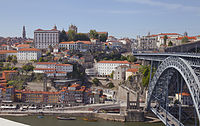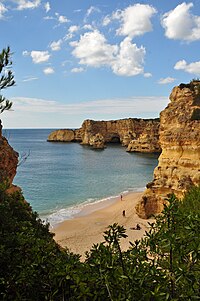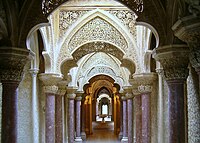
Back السياحة في البرتغال Arabic Cestovní ruch v Portugalsku Czech Tourismus in Portugal German Tourisme au Portugal French პორტუგალიის ტურიზმი Georgian Turismo em Portugal Portuguese Туризм в Португалии Russian Portekiz'de turizm Turkish Туризм у Португалії Ukrainian Portugaliyada turizm Uzbek













Tourism in Portugal serves millions of international and domestic tourists. Tourists visit to see cities, historic landmarks, enjoy beaches, or religious sites. As of 2019, Portugal had 27 million visitors.[1][2] The most popular destinations were Lisbon, Porto, the Algarve, the Portuguese Riviera, Madeira, Sintra, Óbidos and Fátima. The most popular with internationals were Lisbon, the Algarve and Northern Portugal. National tourists prefer Northern Portugal, followed by Central Portugal and the Algarve.[1]
- ^ a b Cite error: The named reference
travelbiwas invoked but never defined (see the help page). - ^ "Lisbon, a city that moves and grows". The Business Report. Retrieved 24 January 2019.